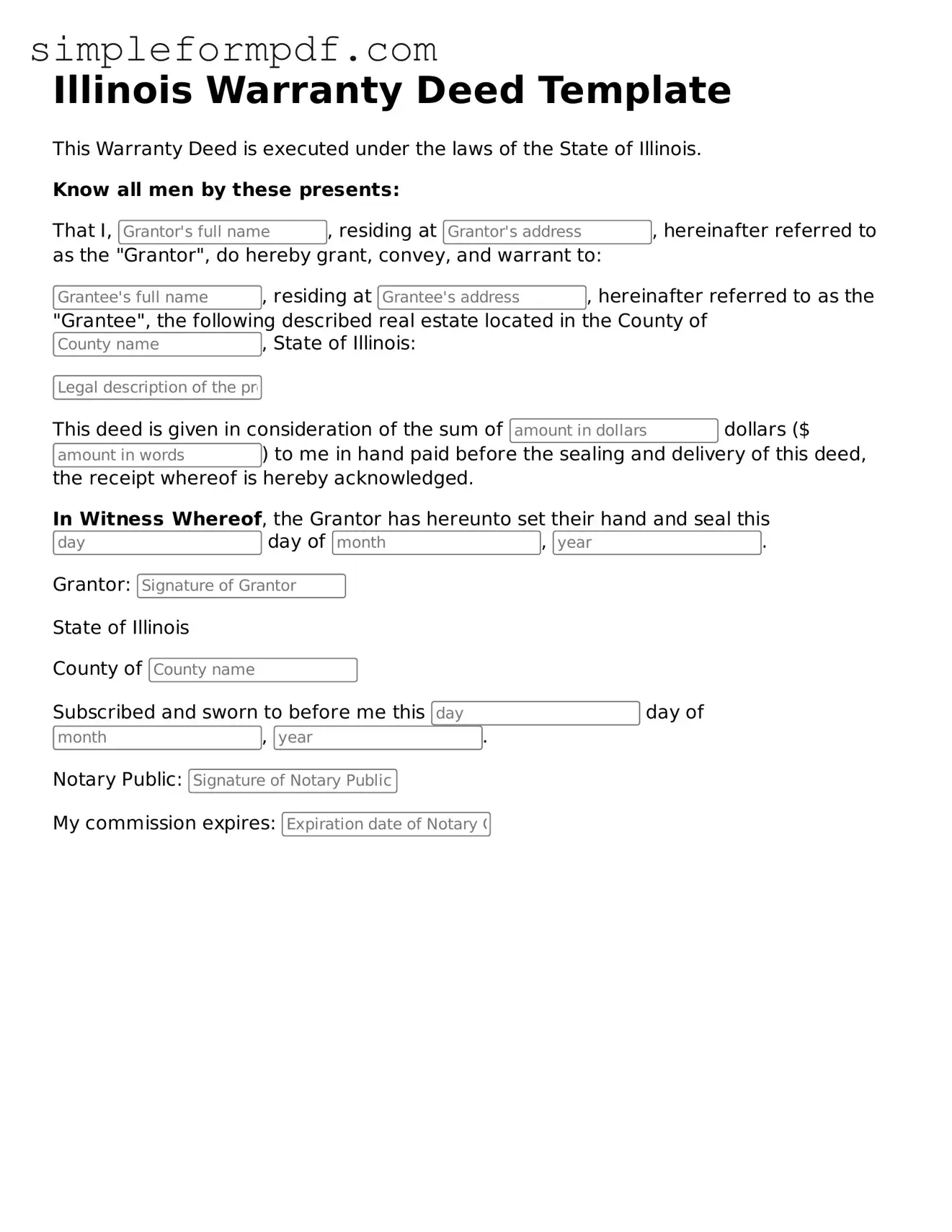Free Deed Form for the State of Illinois
The Illinois Deed form is a legal document used to transfer ownership of real estate in the state of Illinois. It outlines the details of the property being transferred and the parties involved in the transaction. Understanding this form is essential for anyone looking to buy or sell property in Illinois, so be sure to fill it out correctly by clicking the button below.
Launch Editor
